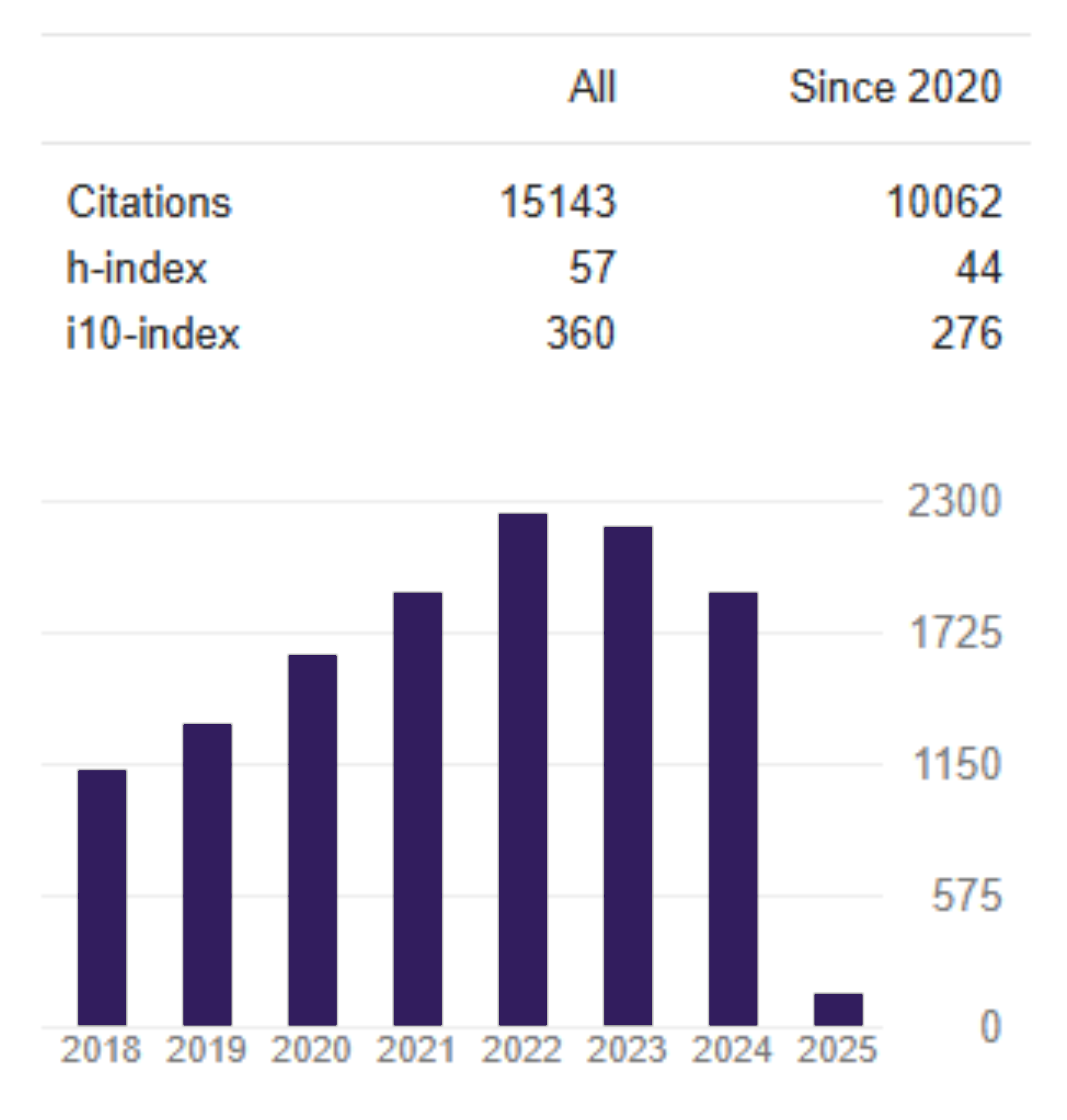The Causality of BI Rate and Federal Fund Rate
DOI:
https://doi.org/10.26905/jkdp.v22i3.1972Keywords:
Bank Indonesia Interest Rates, Granger Causality, Monetary Policy, United States Interest RatesAbstract
The Central Bank held power to carry out a monetary policy through the setting of monetary targets such as the money supply or interest rates with the main objective of maintaining inflation at the level determined by the government. At the operational level, this monetary objective depends on the use of instruments, including open market operations in the foreign exchange market, the setting of the discount rate, the setting of minimum reserve requirements and regulating credit or financing. We analyzed the causality of Bank Indonesia (BI Rate) and US interest rates (Federal Fund Rate). This study used secondary data, especially data from Bank Indonesia and The Federal Reserve. This data was the ones from the monthly time series from January 2006 to May 2016. This study used Granger causality test to determine the causality of BI Rate and Federal Fund Rate. Granger Causality test results indicated that there was no causality between the BI Rate and the Federal Fund Rate. We found that the movement of interest rates was not only caused by the external side, but also by the internal side. The case in Indonesia showed that the movement of interest rates was mainly due to an increase in gross domestic product, low participation in the Global Value Chain and the adoption of the expansionary monetary policy.
JEL Classification: E43, E52, E58
DOI: https://doi.org/10.26905/jkdp.v22i3.1972
Downloads
References
Andrian, T., & Lestari, T. P. (2013). Analisis dampak target The Fed terhadap kebijakan moneter Bank Indonesia (Periode 2005: 07–2013: 12). Jurnal Dinamika Ekonomi & Bisnis, 10(2), 181-193. Retrieved from: https://ejournal.unisnu.ac.id/JDEB/article/view/84
Adam, C. S., Cobham, D., & Girardin, E. (2005). Monetary frameworks and institutional constraints: UK monetary policy reaction functions, 1985-2003. Oxford Bulletin of Economics and Statistics, 67(4), 497-516. Retrieved from: https://papers.ssrn.com/sol3/papers.cfm?abstract_id=764829##
Bank Indonesia. (2017). Bank Indonesia Financial Report. Jakarta: Bank Indonesia. February 15th, 2018. Retrieved from: https://www.bi.go.id/en/publikasi/laporan-tahunan/bi/Pages/LKTBI-2017.aspx.
Bank Indonesia. (2017a). Laporan Inflasi (Indeks Harga Konsumen). Jakarta: Bank Indonesia. February 15th, 2018. Retrieved from: https://www.bi.go.id/id/moneter/inflasi/data/Default.aspx.
Bank Indonesia. (2017b). Statistik Ekonomi dan Keuangan Indonesia (SEKI). Jakarta: Bank Indonesia. February 15th, 2018. Retrieved from: https://www.bi.go.id/id/statistik/seki/terkini/moneter/Contents/Default.aspx.
Bank Indonesia. (2017c). Tujuan Kebijakan Moneter Bank Indonesia. Jakarta: Bank Indonesia. February 15th, 2018. Retrieved from: http://www.bi.go.id/id/moneter/tujuan-kebijakan/Contents/Default.aspx.
Barassi, M. R., Caporale, G. M., & Hall, S. G. (2005). Interest rate linkages: A Kalman filter approach to detecting structural change. Economic Modeling, 22(2), 253-284. http://doi.org/10.1016/j.econmod.2003.12.005
Caldara, D., & Herbst, E. (2016). Monetary policy, real activity, and credit spread: Evidence from Bayesian Proxy SVARs. Finance and Economics Discussion Series 2016-049. http://dx.doi.org/10.17016/FEDS.2016.049.
Caporale, G. M., & Pittis, N. (1997). Domestic and external factors in interest rate determination. Applied Financial Economics, 7(5), 465-471. https://doi.org/10.1080/096031097333321
Cesa-Bianchi, A., Thwaites, G., & Vicondoa, A. (2016). Monetary policy transmission in an open economy: New data and evidence from the United Kingdom. Bank of England working papers 615. Retrieved from: http://www.centreformacroeconomics.ac.uk/Discussion-Papers/2016/CFMDP2016-12-Paper.pdf
Chen, H., Chow, K., & Tillmann, P. (2017). The effectiveness of monetary policy in China: Evidence from a Qual VAR. China Economic Review, 43, 216-231. https://doi.org/10.1016/j.chieco.2017.02.006
Clarida, R., GalÃ, J., & Gertler, M. (1998). Monetary policy rules in practice: Some international evidence. European Economic Review, 42(6), 1033-1067. https://doi.org/10.1016/S0014-2921(98)00016-6
Duburcq, C., & Girardin, E. (2010). Domestic and external factors in interest rate determination: The minor role of the exchange rate regime. Economics Bulletin, 30(1), 1-12. Retrieved from: http://www.accessecon.com/Pubs/EB/2010/Volume30/EB-10-V30-I1-P57.pdf
EU-Indonesia Trade Cooperation Facility. (2015). Indonesia dan Global Value Chain (GVC). February 15th, 2018. Retrieved from: http://www.euind-tcf.com/id/indonesia-dan-global-value-chain-gvc/
Fan, L., Yu, Y., & Zhang, C. (2011). An empirical evaluation of China’s monetary policies. Journal of Macroeconomics, 33(2), 358-371. https://doi.org/10.1016/j.jmacro.2010.11.003
Haryati, S. (2009). Pertumbuhan kredit perbankan di Indonesia: Intermediasi dan pengaruh variabel makro ekonomi. Jurnal Keuangan dan Perbankan, 13(2), 299-310. Retrieved from: http://jurnal.unmer.ac.id/index.php/jkdp/article/view/938
Huruta, A. D. (2017). Kausalitas inflasi dan pertumbuhan ekonomi indonesia periode 1965– 2013. Jurnal MODUS, 29(1), 91-103. Retrieved from: https://ojs.uajy.ac.id/index.php/modus/article/view/1028
Kamber, G., & Mohanty, M. S. (2018). Do interest rates play a major role in monetary policy transmission in China? Working Papers 714. Retrieved from: https://www.bis.org/publ/work714.htm
Melani, A. (2015). Apa Dampak Kenaikan Suku Bunga The Fed untuk RI? August 2nd, 2018. Retrieved from: https://www.liputan6.com/bisnis/read/3421482/bank-sentral-negara-maju-dongkrak-suku-bunga-bagaimana-dengan-ri
Prastowo, D. (2008). Analisis Laporan Keuangan. Edisi Kedua. Yogyakarta: Sekolah Tinggi Ilmu Manajemen YKPN.
Rosadi, D. (2012). Ekonometrika dan Analisis Runtun Waktu Terapan dengan Eviews. Yogyakarta: ANDI.
Sasongko, G., & Huruta, A. D. (2018). Monetary policy and the causality between inflation and money supply in Indonesia. Business: Theory and Practice, 19, 80–87. https://doi.org/10.3846/btp.2018.09
Setiawan, W. (2010). Analisis dampak fluktuasi perekonomian dunia terhadap efektifitas kebijakan moneter. Thesis. Universitas Indonesia.
Setiawan, S. R. D. (2017). The Fed Akan Naikkan Suku Bunga, Apa Dampaknya Bagi Perbankan? August 2nd, 2018. Retrieved from: https://ekonomi.kompas.com/read/2017/03/15/193000626/the.fed.akan.naikkan.suku.bunga.apa.dampaknya.bagi.perbankan
Siahaan, L. M., & Hidayat, P. (2015). Analisis kausalitas dan kointegrasi antara tingkat suku bunga Bank Indonesia (BI Rate) dengan suku bunga Bank Amerika Serikat (The Fed). Jurnal Ekonomi dan Keuangan, 1(8), 49-60. Retrieved from: https://jurnal.usu.ac.id/index.php/edk/article/view/9449
Siburian, A. P. D. (2015). Analisis peranan kebijakan moneter dalam menangani dampak variabel shock external di Indonesia. Essay. Universitas Sumatera Utara.
Touny, M. A. (2013). Investigate the long-run trade-off between inflation and unemployment in Egypt. International Journal of Economics and Finance, 5(7), 115–125. https://doi.org/10.5539/ijef.v5n7p115
Winarno,W.W. 2015. Analisis Ekonometrika dan Statistika dengan Eviews Edisi 4. Yogyakarta: UPP-AMP YKPN.
Yahya, I. (2007). Efektivitas kebijakan moneter dalam menangani dampak variabel shock external pada rezim nilai tukar mengambang bebas: Studi kasus Indonesia (Model struktural VAR: periode 1997:8–2006:12). Essay. Universitas Indonesia.
Yudaruddin, R. (2017). The global economic crisis and its impact on bank lending in Indonesia. Jurnal Keuangan dan Perbankan, 21(4), 621-629. Retrieved from: http://jurnal.unmer.ac.id/index.php/jkdp/article/view/1513
Downloads
Additional Files
Published
Issue
Section
License

This work is licensed under a Creative Commons Attribution-ShareAlike 4.0 International License.



